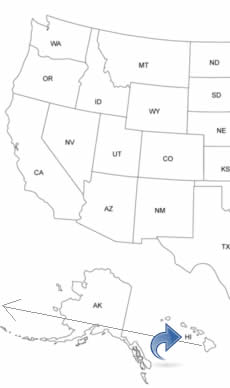HAWAII PEOPLE SEARCH!
- ✔ Contact Info
- ✔ Phone Numbers
- ✔ Criminal Records
- ✔ Income Info
- ✔ Neighbors
- ✔ People's Age
- ✔ Property Ownership
- ✔ And Much More
Hilo, Hawaii
Hilo is located on the eastern coast of the Big Island of Hawaii and is the third largest city in the U.S. State of Hawaii. Hilo is the oldest city in the Hawaiian archipelago. Hilo is also home to the Pana'ewa Rainforest Zoo, several shopping centers, and cafes. Hilo has the status of being the settlement which is of the largest size among all the settlements on the Island of Hawaii.
To See And To Do In Hilo
- Rainbow Falls
- Hilo Art Museum
- Pacific Tsunami Museum
- Prince Kuhio Plaza Area
- The Lyman House Museum
- Lili'uokalani Gardens
- Richardson's Ocean Park
- King Kamehameha Statue
- Naha Stone
- Downtown Hilo
History Of Hilo - Timeline
The Polynesians came and settled in the Hilo area in the year 1100 A.D. They established agricultural and fishing communities. In 1796, Kamehameha the Great, who was the founder and first ruler of the Kingdom of Hawaii came to Hilo to build canoes to help him conquer the Hawaiian Islands. In 1820, American missionaries arrived in Hilo. Waiākea was the main settlement on Hilo Bay in 1823. The Waiākea Mission, called Haili Church, was the first church in eastern Hawaii island, founded in 1824.
In 1838, the Lyman House Memorial Museum building was completed. It was built by Reverend David Belden Lyman and his wife, Sarah Joiner Lyman. In 1869, a small parish school of 42 students was established in Hilo for the purpose of teaching English to native Hawaiians. The school was named St. Joseph. In 1899, the W. H. Shipman House was completed.
In 1900, Hilo Railroad Company begins operations on the Big Island. In 1910, the Hilo Masonic Lodge Hall–Bishop Trust Building was completed. In 1911, Hilo was incorporated as a city. In 1912, the S. Hata Building was completed. Around 1916, the Thomas Guard House was built. In 1921, the Edward H. and Claire Moses House was built. In 1925, the Historic Palace Theater and the Walter Irving and Jean Henderson House was built.
In 1932, a police station was built where the East Hawaii Cultural Center is today. The morning of April 1, 1946, the Big Island was slammed by a tsunami that took 122 lives. The Kuwahara store was one of the few structures on the ocean side of Kamehameha Ave in Hilo to survive. In 1950, more than 27,000 people lived in the city. On May 23, 1960, Hilo was hit with another tidal wave that left 537 buildings in ruins and 61 dead despite the tsunami warning system that had been established.
